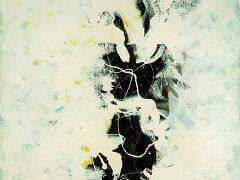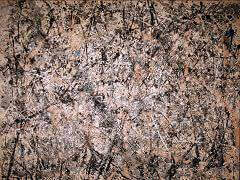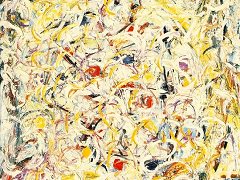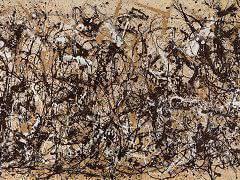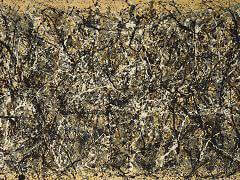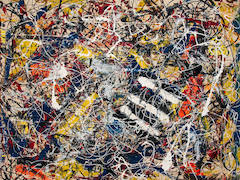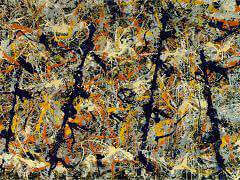Guardians of the Secret, 1943 by Jackson Pollock
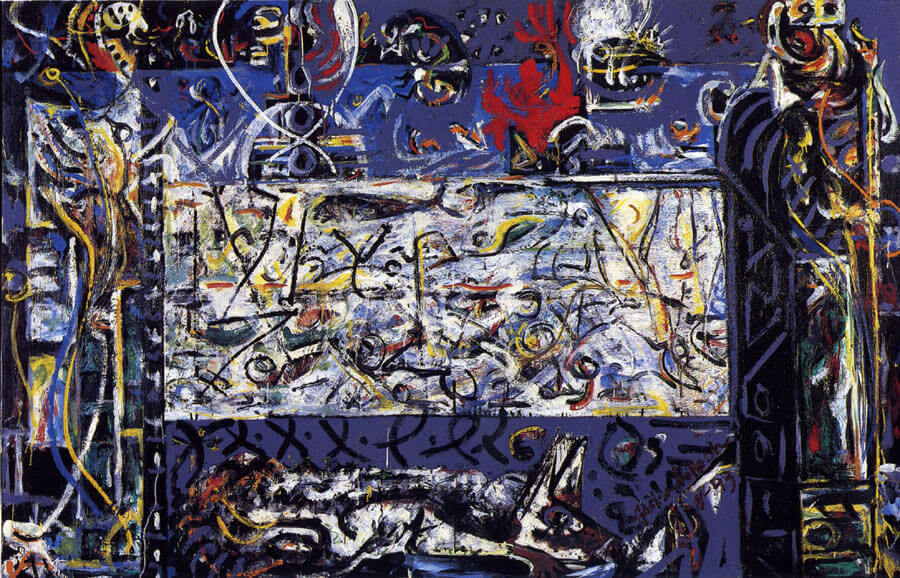
Guardians of the Secret (1943) is partly indebted to Native American art (Pollock attended the 1941 Indian Art Exhibition at MoMA - he actually visited the show with this Jungian analyst!) and Jungian mythology. Pollock,
having grown up in the West, was exposed to Native American art early - at least according to Pollock. In fact, a myth developed around Pollock's childhood in the West. Pollock recollected witnessing Indian rituals as a child, and
historians later argued that such rituals played an important role in the development of his artistic process. Art historians such as Jackson Rushing contend that Pollock was inspired by Indian sand painters who created temporary
works of art as part of a religious ritual as well as the notion that art-making is a spiritual process. Rushing believes that he turned to drip painting in a shamanistic attempt to heal himself; not coincidentally, Indian sand
painting is often part of a healing ritual.
Though Pollock sought out Indian art and became well-versed in the ethnology of Native Americans, he maintained that his debt to Indian art was subconscious, as he did not deliberately draw upon American Indian artistic process or
subject matter. What sort of myths do you see in this painting? What do you think the "secret" is, and who are the "guardians?" Did Pollock become his own shaman?
Relying for compositional inspiration on studio compositions of Picasso, Guardians of the Secret was the most startling entry in Jackson Pollock's first show, and it
represents the most thoroughgoing synthesis of his themes and influences up to that time. In Guardians of the Secret, world mythology, Miro, African, American Indian, and prehistoric art were successfully synthesized with
Picassoid elements to form a psychologically redolent whole. Its composition once more features an abstracted male and female who now seem to face in toward a figured "canvas" displayed heraldically between them.



